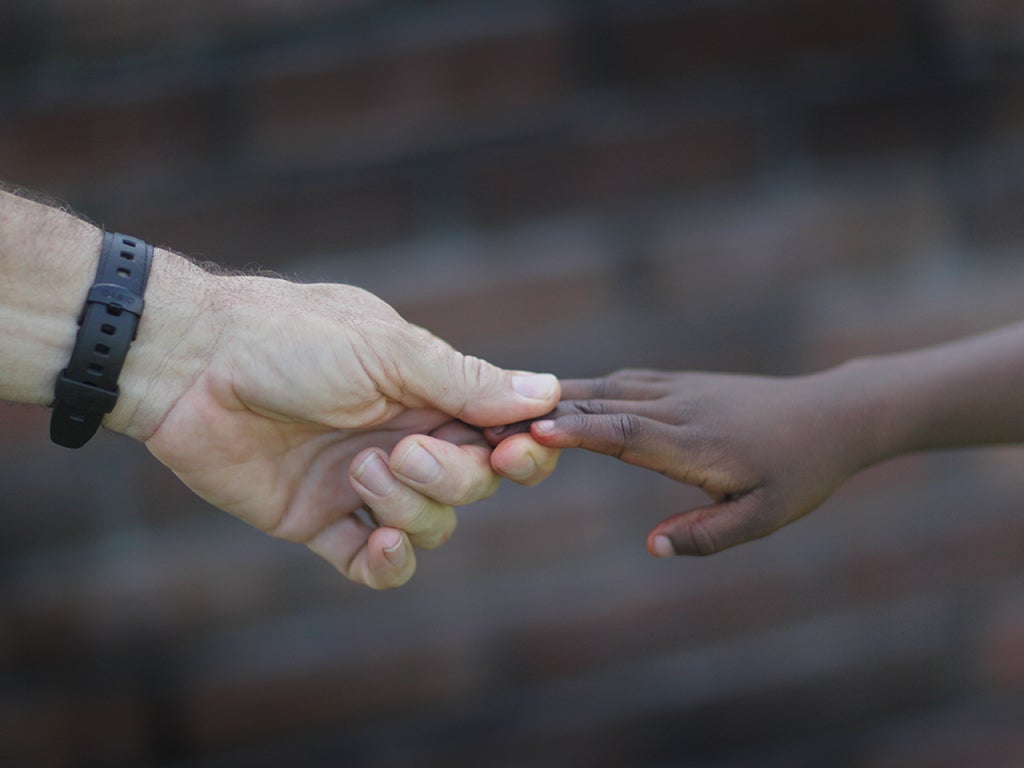Adoption Week: what it means to be an adopted child in 21st century Britain
The process of providing the best care for children is complex - we have improved, but there's still a long way to go

In the past four years the success of National Adoption Week has quadrupled, leading to a 57 per cent increase in the number of children adopted in England. This increase in adoption orders is portrayed by the government to be a testament to their adoption action plan.
To put this in perspective, of the 92,000 children in care across Britain almost 6,000 children were adopted last year.
The government positioning of adoption as the best outcome for children in care is accompanied by rhetoric which asserts prospective adopters want children to be placed quickly. Thus, reforms continue with further changes in adoption legislation introduced in the Children and Families Act 2014. This far-reaching legislation encourages local authorities to consider placing children with potential adopters before a plan for adoption has been agreed.
Furthermore, the duty placed on social workers to match the ethnicity of a child with their adoptive parents has been removed, with the intention of increasing adoptive opportunities.
The economic benefits of adoption are reported in research which used a cost calculator for children’s services developed by Loughborough University. Their findings suggest it costs a local authority £25,782 to have a child adopted, compared to up to £400,000 for each child remaining in long-term care. Worryingly, the scorecard system established by former education secretary Michael Gove, serves to compare local authorities' adoption performance.
Arguably, the focus on adoption as the “best” outcome, and the speed by which court proceedings are concluded can prevent meaningful reflection on other aspects of children’s emotional needs before they are placed with their adoptive parents.
Obviously, it is harmful to a child to have to wait for decisions about his or her future. But we can’t divorce the demand for judicial swiftness from the severe austerity cuts and subsequent impact that has had on family law reform.
We have seen concerns about the demand for judicial speed in care proceedings trumping robust examination of state evidence raised recently by the president of the High Court’s family division, Lord Justice Munby. He argues that evidence should not be simply a historic narrative, but based on informed analysis.
Thus, a professional's ability to reflect on their decision making is crucial in ensuring care planning for each child is centred on their individual needs. Such reflection will help avoid the repeat of previous injustices, such as the policy which led to tens of thousands of British children being sent overseas where many of them suffered neglect or abuse.
Gove and other stories
Gove was himself adopted in 1967 as a four-month-old child. His experience was positive, but it is misleading when he asserts that adoption was easier at that time. The year after Gove was born, 25,000 children were adopted in the UK. In 1968, 92% of children placed for adoption were illegitimate and half of those were babies. Being a single mother was still subject to taboo – and for those mothers, their relatives and some of the children, placing a child for adoption was by no means a “straightforward” experience.
The ITV series, Long Lost Family, which reunites people with family members after years of separation, has been on our screens since 2011 and reminds us of the societal constraints which left – and still leave – some children estranged from their birth families.
Obviously, the way loss and reunion are portrayed are edited to maximise the emotional impact for viewers – but this doesn’t take away from the intensity of the meaning that participants gain from the realisation of an aspect of themselves in the biological relationship with another.
This televised legacy of our adoption past, is contrasted with those currently seeking to adopt portrayed in Channel 4’s Find Me a Family and 15,000 Kids and Counting. Such programmes serve to prick public consciousness of the complexity of adoption and the needs of thousands of children.
Changing face of adoptive families
Nearly a decade has passed since legislation was passed allowing unmarried and same-sex couples to adopt. Although, this change was met with legal challenge most recently in Northern Ireland, about 6% of children in the UK were adopted by same-sex couples in 2013, up from 4% in 2012.
More recently, the Children and Families Act 2014, streamlines the system of “concurrent planning” under which children under court care can be placed with foster parents who may go on to adopt the child. These placements aim to prevent children losing a further close attachment, but they challenge birth families, social workers and the judicial system regarding the influence such placements will have on final decision making.
Another area of potential conflict has been doing away with the duty to match the ethnicity of a child with that of their adoptive parent. This change is intended to increase the opportunities for adoption – but it runs the risk of minimising the importance of cultural heritage to children’s developing sense of self.
Adoption remains something that is decided in the privacy of family courts, but its place in our consciousness is increasingly transparent. In addition to legislation, our response to the needs of the thousands of children in public care will help determine what it means to be an adopted child in 21st century Britain.
Donna Peach is a Social Work Lecturer at University of SalfordThis article was originally published on The Conversation. Read the original article.
Subscribe to Independent Premium to bookmark this article
Want to bookmark your favourite articles and stories to read or reference later? Start your Independent Premium subscription today.

Join our commenting forum
Join thought-provoking conversations, follow other Independent readers and see their replies